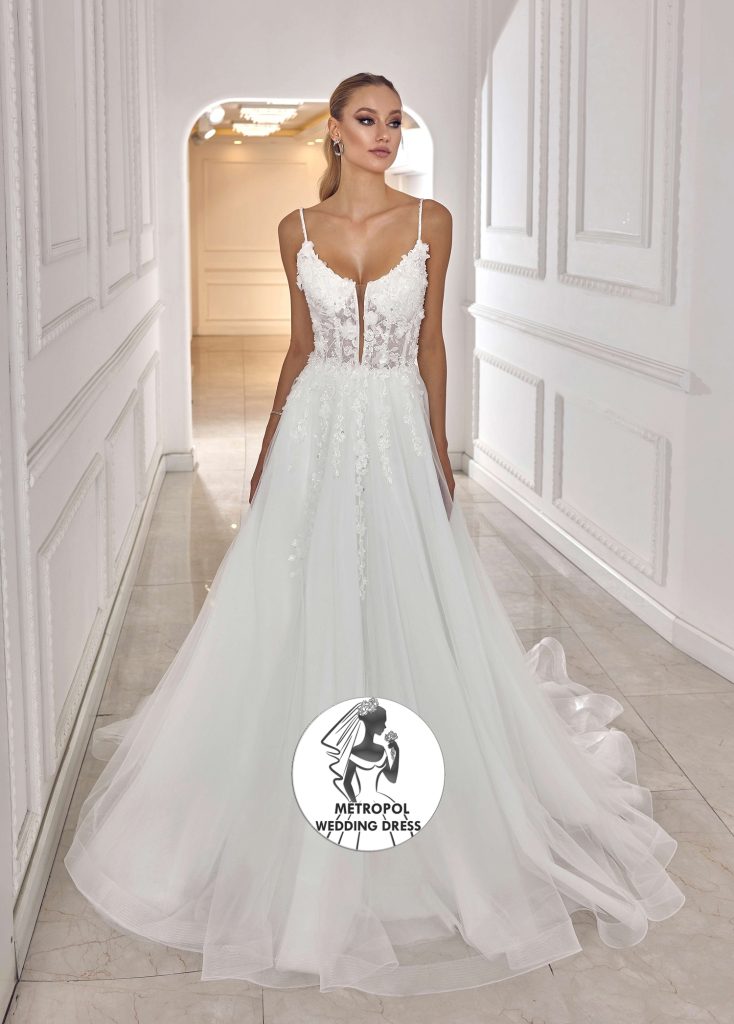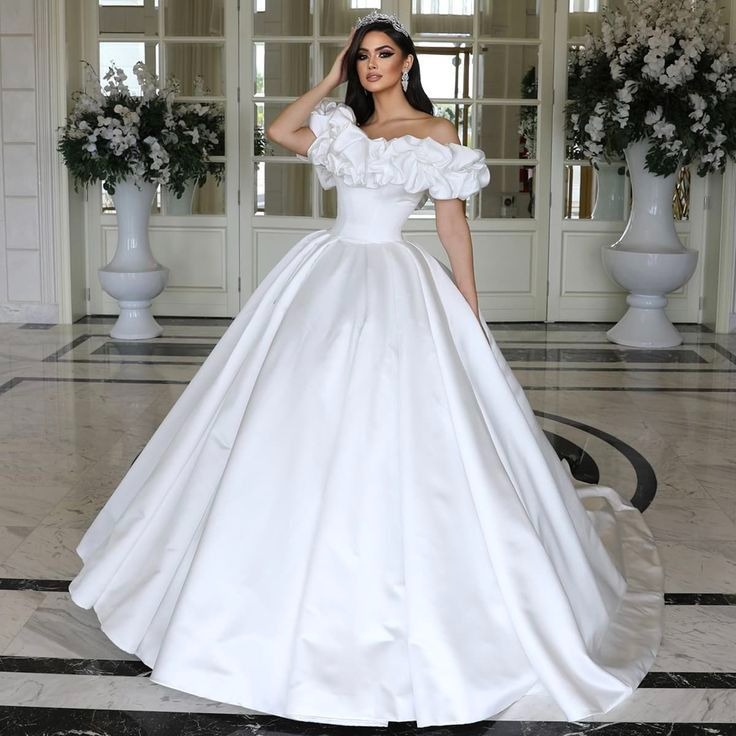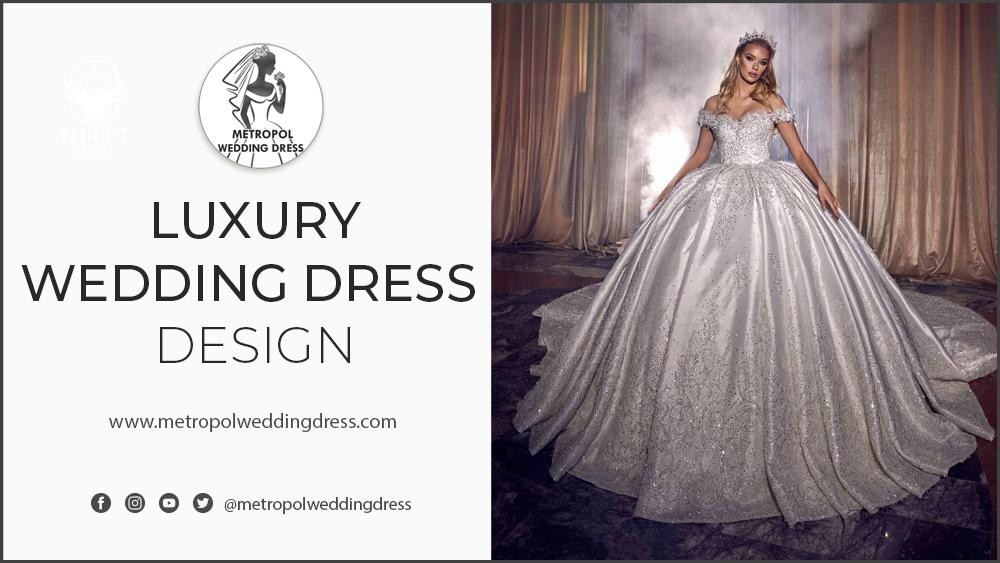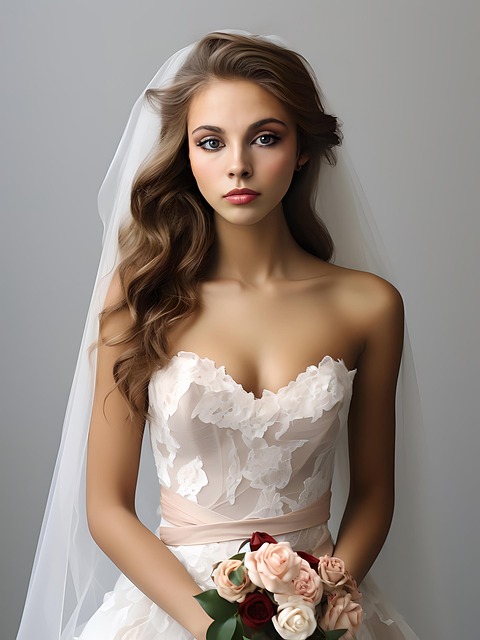
Turkey Wedding Dress Trade Our country is one of the largest wedding dress manufacturers in Europe. In recent years, manufacturers have designed wedding dresses that are suitable for the culture and taste of different countries, which has enabled the wedding dresses produced in our country to be preferred by the Middle East, Russia and America, as well as Europe. The wedding dress sector is a sector where handcrafting is intensive and a variety of high value-added products are produced. With this feature, the sector creates significant employment in our country. The sector mainly consists of SMEs. Approximately 70% of these manufacturers operate in Izmir. Due to the limited number of studies conducted specifically for the sector, it is not possible to access statistical information about the sector.
The choice of model for a wedding dress varies according to the season, the preferred wedding dress model or the body characteristics, desires and beliefs of the person who will get married. In general, the wedding dress model is named as A-cut, fish cut, princess cut. However, according to the brides-to-be’s wishes, very different models are developed by
changing the details of the collar, skirt, back and sleeves. Our country is one of the
largest wedding dress manufacturers in Europe. In recent years, the fact that manufacturers have designed wedding dresses
appropriate to the culture and taste of different countries has enabled the wedding dresses produced in our country to be
preferred by the Middle East, Russia and America, as well as Europe.
The wedding dress sector is a sector where handcrafting is intensive and a
variety of high value-added products are produced. With this feature, the sector
creates a significant amount of employment in our country. The sector mainly consists of SMEs. Approximately 70% of these manufacturers operate in Izmir.
Due to the limited number of studies conducted specifically for the sector, it is not possible to
access statistical information about the sector.
The choice of model for a wedding dress varies according to the season, the preferred wedding dress model or the body characteristics, desires and beliefs of the person who will get married. Generally, the wedding dress model is named as A-cut, fish cut, princess cut. However, according to the brides-to-be’s wishes, very different models are developed by differentiating the collar, skirt, back and sleeve details. The Textile and Ready-to-Wear Sector makes very serious contributions to the Turkish economy with its production, employment and export values. It has a significant share in the country’s economy and foreign trade with a share of 10% in the gross domestic product (GDP) and approximately 20% in general exports. The Ready-to-Wear Sector ranks second in exports after the Automotive Sector. The Turkish Ready-to-Wear Sector has very important advantages with its quality production, qualified workforce and proximity to the European market. It is the 6th largest exporter in the world with its wide range of products from standard products to qualified products.
In our country, the Ready-to-Wear Sector carries out production in many sub-sectors. One of these sub-sectors is the Wedding Dresses Sector.
Wedding dresses are of great importance in terms of weddings and starting a family.
Weddings and marriages differ according to the country of residence, social class, religion, culture and ethnic groups. Wedding dresses have changed in terms of color, design and the meaning they represent in the ceremony during this historical process. While ceremonies used to be carried out with different clothes and traditions, they have started to resemble each other with the effect of globalization.
Turkey Wedding Dress Trade
As has been the case throughout history, bridal dresses are now identified with marriage and wedding ceremonies. In every period of history, the dress that the bride, who is the main element of weddings, will wear on this special day has a special place and meaning.
Wedding dresses, which are so important in human life, also have an important place in terms of fashion, innovation, R&D and added value for the Turkish Ready-to-Wear Sector. Wedding dresses are a special product in both emotional and economic terms. The wedding dress sector is in the upper
categories of ready-to-wear clothing. The reason for this is that a wedding dress is worn once in a person’s
life. The fact that the wedding dress production process is labor intensive is one of the
strongest aspects that increases the added value of the wedding dress sector. Our country has a significant competitive power with its
qualified workforce trained in this field.
The small initial capital increases the number of companies operating in the sector rapidly. This situation causes small and
micro enterprises to be dominant.
Turkey’s wedding dress design and production infrastructure is strong. Countries that are pioneers in fashion such as France,
Italy, and Spain take Turkey as an example in terms of production and design quality. Istanbul and Izmir are especially the locomotives in the wedding dress and evening dress sector. In the domestic market, store and boutique production is the main issue. Izmir is an
important center in mass production.
In the wedding dress industry, not only domestic wedding production is made, but also exports are made to Middle Eastern countries such as Egypt and Saudi Arabia, as well as to countries such as Spain, Italy, Portugal and the Russian Federation. Turkey’s annual wedding dress export is approximately 400,000 pieces. Turkey’s goal is to be the market leader with more affordable products than its competitors Italy and Spain and higher quality products than China.
In addition, Turkey has increased its exports to Europe and the Far East.
The Aegean region is the second important region in export figures after Istanbul in ready-made clothing and apparel exports.
Izmir has a large share in export figures. Izmir also meets 70% of the wedding dress production in Turkey. The wedding dress sector continues to grow in production, fashion marketing and branding. At the same time, Izmir has also begun to be recognized as a wedding dress manufacturer like Milan and Barcelona.
In the 1920s, wedding dresses created a royal perception. Especially with women gaining the right to vote, wedding dresses changed to plain lace and silk wedding dresses. Famous fashion designer Coco Chanel also introduced a controversial new style by creating a short wedding dress with a long tulle train. Historically, the wedding dress worn during the wedding displayed the social and economic status of the bride’s family. During this period, small and elegant accessories were often used in wedding dresses as accessories, along with beads. Model details included corsages, thick belts, and fringed skirts.
The wedding dress fashion of the 1930s was mostly inspired by movies. The wedding dresses shown in the movies were usually designer-made and were only affordable for the wealthy. White or light-colored party dresses were redesigned as wedding dress models for brides, making them suitable for every budget. Wedding dress models included long trains, cross-cut dresses, long sleeves, hats or crown-style headdresses. World War II caused almost all men to be at the front,
and women to take the place of men in jobs. Women began to work in factories, heavy work, and mines. The clothing sector shrank and women turned to practical and comfortable clothing instead of elegant clothing.
With the end of the war, people began to earn money again, and in the 1940s, wedding dresses became more ornate and a little more unusual.
Long ball gowns reappeared, and pearls and crystal stones were used for the first time.
A change began to be seen in the wedding dress industry in the 1950s and 1960s. While some brides preferred more traditional, long, loose wedding dresses, others preferred sleeveless or strapless models.
Developments in production now allowed wedding dresses to be sold “off the shelf,” which meant much more choice for brides. The most common wedding dress styles in these years were simple sweetheart necklines, thin waists, and puffy skirts.
The 1970s were about two polar opposites. On the one hand, popularity is at the forefront
It was also an era of economic struggle, cultural change and technological innovation. Therefore, there were two themes in wedding dress design. On the one hand, more flowing, feminine and free, on the other hand, formal and clean. While many celebrities wore two-piece suits, some wore elegant wedding dresses with long, puffy sleeves and different hats.
In the 1980s, white and cream colors became popular in wedding dresses. Until this time, wedding dresses were decorated with lace and beads. The sleeves were balloon-shaped. During this period, shoulder pads began to be used in wedding dresses.
The wedding industry boomed in the 1990s. Weddings became more ostentatious and much more magnificent.
By the 2000s, strapless dresses became quite popular in the wedding dress industry. Shinier fabrics such as satin and taffeta became widespread and stone embellishments were used more than lace details. Ball gowns were a favorite and colorful straps or appliques were preferred. The dresses were relatively traditional, offering long skirts and long trains. However, as in the 1990s, unusual wedding dresses such as short wedding dresses were also preferred.
2010 was the era of innovative ceremony arrangements. Sleeves returned and shoulder pads were abandoned. Wedding dresses became more body-conforming.
Mermaid-style dresses, delicate beading, flowers and slightly puffy tulle skirts (like tutus) were introduced and became popular among brides-to-be.
In recent years, white wedding dresses have begun to give way to off-white wedding dresses, and colorful ribbons, shoes and flowers have begun to be added to wedding dresses.
While in previous periods, uniform wedding dress models were popular,
nowadays, a wide variety of wedding dress models are designed and produced.
A significant increase in the number of weddings is also observed in Asia. This trend, which started in Japan in the 1970s, has continued in China and India since the 1990s. China is the country that produces the most wedding dresses in the world and is the leader in exports. (www.izfas.com.tr).
Fairs play a major role in the development of the wedding dress sector. In this context, important fairs organized in the world are as follows:
- Barcelona Wedding Dress Week: It is the fair with the highest participation, held every year since 1990. The number of visitors is more than 15 thousand.
- Paris Wedding Dress Fair: Established in 1998 and held every year,
Paris Wedding Dress Fair creates a connection between international buyers, marketing professionals and
all fashion labels (wedding dresses, cocktail and evening dresses, accessories and children’s wear labels) in France or abroad. Paris Bridal Fair has become the meeting point
for all professionals in the wedding industry. 25% of the participants are foreigners. - Russia Wedding Fair: It is a fair that has been held since 2000, usually in March, and where the participants are mostly Russians.
In the world, the wedding dress sector market reached 56.5 billion dollars in 2015. In order to reach general export and import figures in the world, the first 6 digits of the Customs Tariff Statistics Position (CTSP) number are used. The wedding dress sector is a sub-branch of the ready-to-wear and textile sector. The fact that a special CTSP number has not been opened for the wedding dress sector in many countries in the world has made the analysis of the sector difficult. Due to this situation, wedding dress data was evaluated within the women’s synthetic outerwear product group of 61.04.43.
With the CTSP number of 61.04.43, it is seen that China is the world leader in wedding dress export figures worldwide, followed by Vietnam, Hong Kong and Turkey.
Based on the Trademap 2015 data given in Figure 1, it is seen that China ranks 1st in the world, especially with its subcontracting production and low labor cost advantages. China exports approximately 8 million wedding dresses per year. For example; Vietnam, although ranked 2nd, has not been a prominent country in terms of wedding dresses. The development of the wedding dress sector in Izmir began in 1975 with the establishment of the first wedding and evening dress manufacturer Madencioğlu. The owner of the company, seeing the gap and need in the sector, established the first successful wedding dress company. The company maintained its leading position in the wedding dress market until the early 2000s, and in order to achieve this success, it invested in employees who would provide customers with high volumes of products and constant quality in a short time. The educated and experienced employees in the company, seeing the profit margins, left the company and established their own workshops. The emergence of these subsidiary companies resulted in the development of the wedding dress sector in Izmir. These new companies, like Madencioğlu, generally focused on mass production of more than a thousand ready-to-wear wedding dresses per year, rather than haute couture production. Thus, Izmir is positioned differently from manufacturers in other cities of Türkiye, such as Istanbul, where companies specializing in haute couture production are located. According to EGSD data, Izmir provides approximately 70% of Turkey’s production in the bridal sector.
There are around 1000 businesses producing wedding dresses, engagement dresses and evening dresses in Izmir, along with around 700 small and medium-sized workshops. During the fieldwork, no company was found that could exceed the SME category in terms of its size. Large-scale companies operating in the wedding dress sector in Izmir have 50-80 employees, while smaller companies have 15-20 employees. Based on these figures, it is estimated that a total of 4000-6000 people are employed in the sector. In the cluster level analysis conducted for Wedding Dresses and Evening Dresses, it is seen that the cluster capacity in the sector is at a low level in terms of relationship and organization. It is also observed that the management effectiveness in the sector is at a low level. As can be interpreted from the job and needs analysis, while the sector has a low level of effectiveness in international markets; employment and firm density in production are at a medium level.
The wedding dress and evening dress sector, one of the most important items in Turkey’s value-added exports, has an annual export value of 500 million dollars and exports to approximately 80 countries.
The sector gained great momentum before the World Health Organization declared the outbreak a pandemic. The fact that life in China, which dominates 70-80 percent of the world wedding dress and evening dress sector, came to a standstill as of the end of December, directed a large part of the demand to Turkey, as in many other areas.
According to the data of the Turkish Statistical Institute (TÜİK), an average of 550 thousand couples get married in Turkey every year and approximately 15 million people attend weddings.
With the continuous change in technology and fashion, the production of a wide variety of products and their introduction to the market, it has been observed that conscious consumers focus on the parameters related to the design, fabric, stitching quality, anatomical structure and price of the garment when purchasing clothes. These parameters have led ready-made clothing manufacturers and clothing designers to work on the consumer’s searches. It has been determined that the only way to reach the consumer is the right model, the right fabric and the right pattern.
Manufacturers who produce custom wedding dresses apply a rehearsal production system. Wedding dress rehearsals differ from daily dress rehearsals. While the aim of a rehearsal in daily dress production is to ensure that the garment fits the person’s body exactly, the aim of the rehearsal in custom wedding dress production is to adapt to the body as well as to camouflage the body features that the person is not satisfied with with various techniques or to make different applications on the wedding dress by specifying the areas they want to highlight in the rehearsals. In other words, the wedding dress fitting process is a process in which people’s expectations are shaped.
The consumer profile is changing every day. Consumers now want to have a shopping experience where they can easily find and examine the product they want in online environments and make price comparisons. The new consumer’s expectation is that there is a variety of products and a wealth of suggestions on websites.
Consumers decide to buy a product by examining it both online and in stores. The rate of those who examine the product in the store and make a virtual purchase is 17%, the rate of those who examine the product in the store and make a virtual purchase is 32%, the rate of those who make a virtual purchase again by doing a virtual research is 44% and the rate of those who buy the product in the store as a result of the virtual research is 51%.
People who buy wedding dresses over the internet either turn to model research on the websites of various stores or designers or follow the social media accounts of wedding dress suppliers such as Facebook and Instagram.
Wedding dresses worn on the wedding day are clothes that are getting more expensive.
If the wedding dress is signed by a designer, its price increases even more.
People who want to buy a wedding dress do not want to pay very high prices for a dress that they can only wear once,
which causes them to turn to the option of renting a wedding dress. Because renting a wedding dress is cheaper than buying it. Every year, more than 200 thousand wedding dresses are produced for rent in our country (Hedef Magazine, 2016).
In wedding dress rental, the wedding dress that fits the size of the person who will buy it is rented for a certain period of time (usually 5-7 days). The price of wedding dresses changes according to the sewing method. There are options such as branded ready-made wedding dress models and custom-made wedding dresses.
There are some advantages and disadvantages of renting a wedding dress.
Disadvantages:
- The selection alternatives are quite limited in wedding dress rentals.
- In rental, it is difficult to find a wedding dress that fits the body measurements perfectly
rdur. Most of the time, there is no possibility to have alterations made on the rented wedding dress. However, some companies allow minor model changes such as body adjustment, skirt and strap length adjustment.
- Since the wedding dress is provided by rental, it cannot be kept as a memory.
Advantages: - When the wedding dress is rented, there will be no obligation to store it in a special way for years and to have it dry-cleaned at regular intervals.
- It is less costly.
Although renting a wedding dress has created a disadvantage especially during the pandemic, companies have eliminated this disadvantageous situation for themselves by performing special cleaning in terms of hygiene in addition to dry-cleaning the rented wedding dresses.
2.2.2. Procurement by Purchase
A wedding dress can be purchased either from a boutique or a fashion house, or it can be custom-made in a fashion house.
a) Buying a ready-made wedding dress from a store: Ready-made wedding dresses are offered for sale between sizes 34 and 50 depending on their models. Wedding dresses purchased from the store or the same store’s website can have their alterations and fittings done in the store, in accordance with the store’s alteration procedures.
Although the wedding dresses are ready, procedures such as shortening the skirt and reducing the size are provided free of charge, while more detailed alterations such as converting a closed model to a strapless model, covering the chest and back cleavage, adding arms and straps to the wedding dress, changing skirt details, adding appliques and lace are provided to customers by most stores for a fee.
The most important point here is to preserve the integrity of the wedding dress and to ensure that it is not obvious that the addition or alteration was made later.
There is no need to have too many bridal dress fittings when purchasing a ready-made wedding dress. A wedding dress can be purchased 4 or 5 months before the wedding and the alterations are started by taking body measurements 1 month before the wedding.
b) Buying from a fashion house or designer: Since custom-made wedding dresses are made according to the person’s own measurements, they fit the body perfectly compared to ready-made wedding dresses.
Fashion houses and designers constantly monitor wedding dress trends and make suggestions that will fully meet the brides’ demands.
The lace and fabric to be used in the wedding dress model to be chosen are one of the most important factors in determining the price of the wedding dress.
In addition, the embroidery, stones and workmanship to be used in the wedding dress also play an important role in the price of the wedding dress. The season also affects the price of the wedding dress. Since the marriage rate is lower in the winter season, the prices are more affordable in this period compared to the summer period.
Stillwhite
Global Platform for Second Hand Wedding Dresses
Stillwhite is one of the largest second hand wedding dress sales platforms in the world. Here, brides-to-be can find both brand new and slightly used designer wedding dresses at much more affordable prices. Fish model wedding dresses from luxury brands such as Berta, Pronovias, Galia Lahav can be offered for sale at 30-70% below their original price. Stillwhite also offers a search filter for brides who love body-hugging, dramatic silhouettes such as fish cuts. Despite being second hand, many of the products are in showroom clean.
Milla Nova Wedding Dress Price
Affordable Luxury
Milla Nova is a European-based brand with its elegant, feminine and impressive wedding dresses. Prices usually range between 1,200 – 3,500 USD. Milla Nova’s fish model wedding dresses attract attention with their lace details and dramatic trains. Fish cuts in collections such as “Loren”, “Amelia” or “Miranda” are among the favorites of modern brides. Their designs, which combine both classic and bohemian details, are ideal for those looking for affordable yet ostentatious wedding dresses.

Bridal Gown
The Timeless Charm of the Fish Model
“Bridal gown” generally covers all bridal dresses, but fish model bridal gowns have increased their popularity especially in recent years. This model offers both an elegant and feminine look with its cut that fits the body and opens after the knee. It has a wide range of use from sea-themed weddings to elegant hotel organizations. It creates an extraordinary silhouette especially for brides with hourglass body types.
Berta Bridal Prices
The Price of Ultra Luxury
Berta Bridal is known for its bold cuts and dramatic details that hug the body. Berta fish model wedding dresses create the feeling of being on stage with their lace, transparent fabrics and stone embroidery. Their prices usually range between 7,000 – 12,000 USD. Custom-made or haute couture versions can be even higher. Berta stands out as the choice of brides who want to attract attention and have fashion courage.
Kleinfeld Bridal
America’s Wedding Dress Temple
Kleinfeld Bridal, located in New York, is known worldwide for its “Say Yes to the Dress” program. The store offers a wide range of wedding dresses in every style, especially in fish model options. It works with famous designers such as Kleinfeld, Pnina Tornai, Randy Fenoli, Lazaro. This store is like heaven for brides looking for a fish model wedding dress. Prices vary between 2,000 – 10,000 USD on average.
Turkey has long held a distinguished place in the global fashion scene, and in recent years, it has emerged as a dominant force in the international wedding dress trade. With its blend of traditional craftsmanship, modern designs, competitive pricing, and world-class textile production, Turkey has become a go-to destination for both retailers and brides around the globe. From luxury boutiques in Paris to bustling bridal shops in Dubai, Turkish wedding dresses are gracing store windows and bridal runways everywhere.
This article takes a deep dive into the dynamics of the Turkish wedding dress trade—covering everything from its production hubs to export statistics, major players, international buyers, and future trends.
1. Why Turkey? The Strategic Advantages
Turkey’s success in the wedding dress market can be attributed to a powerful mix of geographical, cultural, and industrial factors:
- Strategic Location: Positioned between Europe, Asia, and the Middle East, Turkey is a natural trade hub, making logistics more efficient for global distribution.
- Textile Excellence: Turkey is one of the world’s largest textile producers, providing easy access to premium fabrics like silk, tulle, lace, and organza.
- Skilled Workforce: Turkish ateliers employ thousands of skilled tailors, designers, and embroidery artisans who create detailed, high-quality bridalwear.
- Cost-Effectiveness: Compared to European manufacturers, Turkish wedding dress producers offer highly competitive prices without sacrificing craftsmanship.
- Customization and Flexibility: Many Turkish manufacturers allow for small-batch or bespoke production, which is attractive to boutique owners and private labels.
2. Production Centers: Where the Magic Happens
The heart of wedding dress production in Turkey lies in cities that have become synonymous with bridal fashion:
Istanbul
- As the largest city and economic hub, Istanbul is home to many luxury bridal brands and exporters.
- Districts like Şişli, Bakırköy, and Fatih host a dense concentration of bridal showrooms, workshops, and wholesale markets.
Izmir
- Known for its textile industry, Izmir is a rising star in the bridalwear sector.
- The city combines high production capacity with Mediterranean design sensibilities, attracting buyers from Europe and the Middle East.
Bursa
- With a rich textile history, Bursa supplies many of the fabrics used in wedding dress manufacturing across the country.
- Many dressmakers source custom lace and silk blends from this region.
Konya & Gaziantep
- Emerging centers known for mass production and export-oriented factories, often serving international e-commerce retailers.
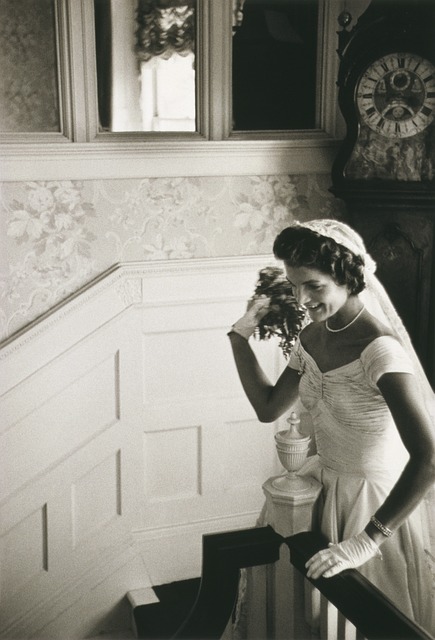
3. Turkish Wedding Dress Styles
Turkey’s bridal design scene is diverse, catering to various cultural and aesthetic preferences. Popular styles include:
- Princess & Ballgown Silhouettes: Full skirts, long trains, and intricate bodices—perfect for traditional Middle Eastern weddings.
- Mermaid & Fit-and-Flare Dresses: Hugging the body with elegant lace or beading—popular in Western and European markets.
- Modest & Hijab-Friendly Bridalwear: High-necklines, long sleeves, and matching veils designed for conservative brides.
- Bohemian & Minimalist Designs: Lightweight, modern gowns ideal for beach or garden weddings, appealing to European and American audiences.
- Custom Creations: Turkish ateliers excel at bespoke designs for brides who want something one-of-a-kind.
In the world of bridal fashion, Turkey has carved out a unique identity—one that seamlessly blends ancient craftsmanship, opulent textiles, cultural heritage, and contemporary design. From the regal silhouettes of Ottoman-inspired gowns to sleek, Western-style minimalism, Turkish wedding dress styles reflect a rich tapestry of influences. This diversity not only appeals to local brides but also attracts a global clientele spanning from the Middle East to Europe, North America, and beyond.
In this comprehensive article, we will explore the defining characteristics of Turkish wedding dresses, the evolution of style trends, popular regional aesthetics, modest and modern alternatives, and how Turkey is setting new standards in global bridal fashion.
1. The Cultural Roots of Turkish Bridal Fashion
Turkish wedding dress styles are deeply rooted in the country’s cultural history. Historically, bridalwear in Turkey was influenced by:
- Ottoman Royalty: Luxurious fabrics, elaborate embroidery, and heavy gold or silver threadwork inspired the early aesthetics of Turkish wedding gowns.
- Anatolian Folk Traditions: Vibrant colors, headpieces, and hand-embroidered details from various regions added richness and identity.
- Islamic Dress Codes: Modesty has always played a role in shaping bridal designs, especially in more conservative regions.
These influences are still visible today, often updated with modern cuts and materials, creating a style that is distinctly Turkish yet universally admired.
2. Signature Elements of Turkish Wedding Dresses
What makes a Turkish wedding dress stand out? There are several hallmark features:
A. Exquisite Embroidery
Turkish gowns are often adorned with hand-embroidered lace, pearls, beads, and sequins, applied in floral or arabesque patterns. This detailing can take hundreds of hours, especially in haute couture pieces.
B. Luxe Fabrics
Designers in Turkey prefer high-quality textiles such as:
- French lace
- Italian silk
- Turkish satin
- Tulle with 3D floral appliqués
These fabrics are sourced both locally and internationally, ensuring that even ready-to-wear pieces have a luxurious finish.
C. Long Trains & Dramatic Veils
Many Turkish dresses feature cathedral-length trains and embellished veils, ideal for formal, grand weddings often held in ballrooms or palace-style venues.
D. Modest & Hijab-Friendly Options
Long sleeves, high necklines, and matching veils or headpieces are available for brides who wish to dress modestly without sacrificing style.
E. Layered Skirts and Overskirts
Designs frequently include removable overskirts or multiple layers of tulle and lace, allowing brides to change their look mid-ceremony or for the reception.
3. Popular Turkish Bridal Silhouettes
Turkey’s bridal designers cater to a wide range of silhouettes to match different body types and preferences.
A. Ball Gown
The traditional choice for many Turkish and Middle Eastern brides. Full skirts, corset bodices, and heavy embellishments define this princess-like silhouette.
B. Mermaid / Fit-and-Flare
Favored for its sultry, body-hugging fit, the mermaid style is widely popular in Turkish bridal fashion. Lace overlays and dramatic trains add a romantic flair.
C. A-Line
A timeless and versatile cut, the A-line flatters most figures and is often used in both modern and modest styles.
D. Sheath / Column Dresses
Preferred by minimalist brides, this style is often paired with intricate lace or beaded detailing to maintain elegance without overwhelming the figure.
E. Two-in-One Dresses
Convertible wedding gowns, often featuring detachable skirts or capes, are gaining popularity among Turkish designers for their practicality and versatility.


